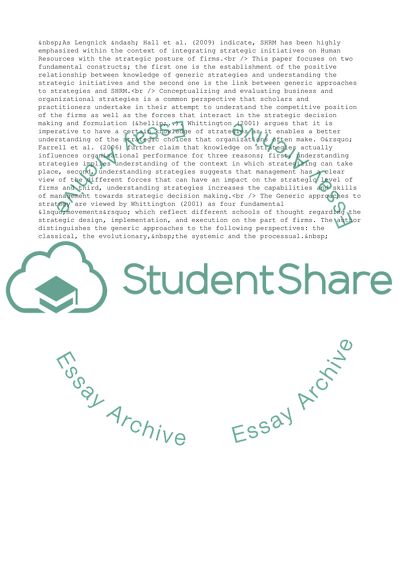Cite this document
(The Strategic Role of the Human Resource Management Term Paper - 1, n.d.)
The Strategic Role of the Human Resource Management Term Paper - 1. Retrieved from https://studentshare.org/management/1564047-why-does-knowledge-of-different-generic-approaches-to-strategy-matter-what-implications-does-this-have-for-our-understanding-of-the-shrm-field
The Strategic Role of the Human Resource Management Term Paper - 1. Retrieved from https://studentshare.org/management/1564047-why-does-knowledge-of-different-generic-approaches-to-strategy-matter-what-implications-does-this-have-for-our-understanding-of-the-shrm-field
(The Strategic Role of the Human Resource Management Term Paper - 1)
The Strategic Role of the Human Resource Management Term Paper - 1. https://studentshare.org/management/1564047-why-does-knowledge-of-different-generic-approaches-to-strategy-matter-what-implications-does-this-have-for-our-understanding-of-the-shrm-field.
The Strategic Role of the Human Resource Management Term Paper - 1. https://studentshare.org/management/1564047-why-does-knowledge-of-different-generic-approaches-to-strategy-matter-what-implications-does-this-have-for-our-understanding-of-the-shrm-field.
“The Strategic Role of the Human Resource Management Term Paper - 1”. https://studentshare.org/management/1564047-why-does-knowledge-of-different-generic-approaches-to-strategy-matter-what-implications-does-this-have-for-our-understanding-of-the-shrm-field.


